
How to Use SOIL PH: Examples, Pinouts, and Specs
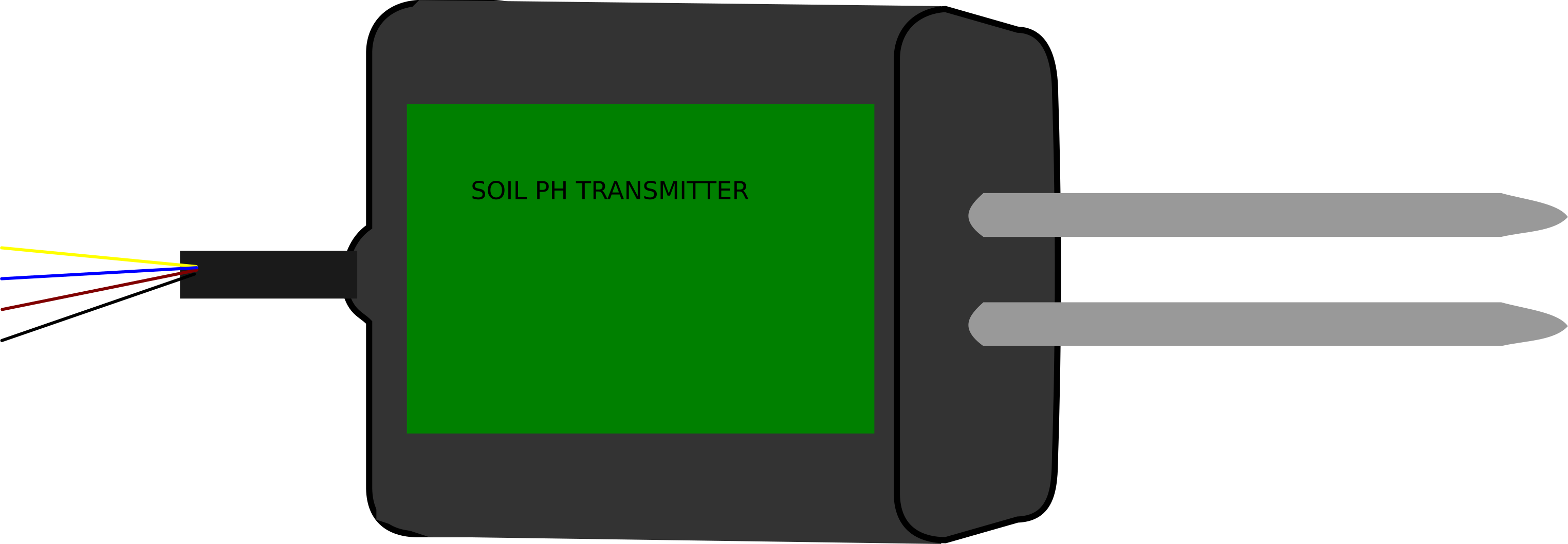
 Design with SOIL PH in Cirkit Designer
Design with SOIL PH in Cirkit DesignerIntroduction
The Soil pH Sensor is an essential tool for measuring the acidity or alkalinity of soil. It provides a pH value that helps in determining soil health and suitability for various plants. This sensor is widely used in agriculture, gardening, and environmental monitoring to ensure optimal growing conditions.
Explore Projects Built with SOIL PH
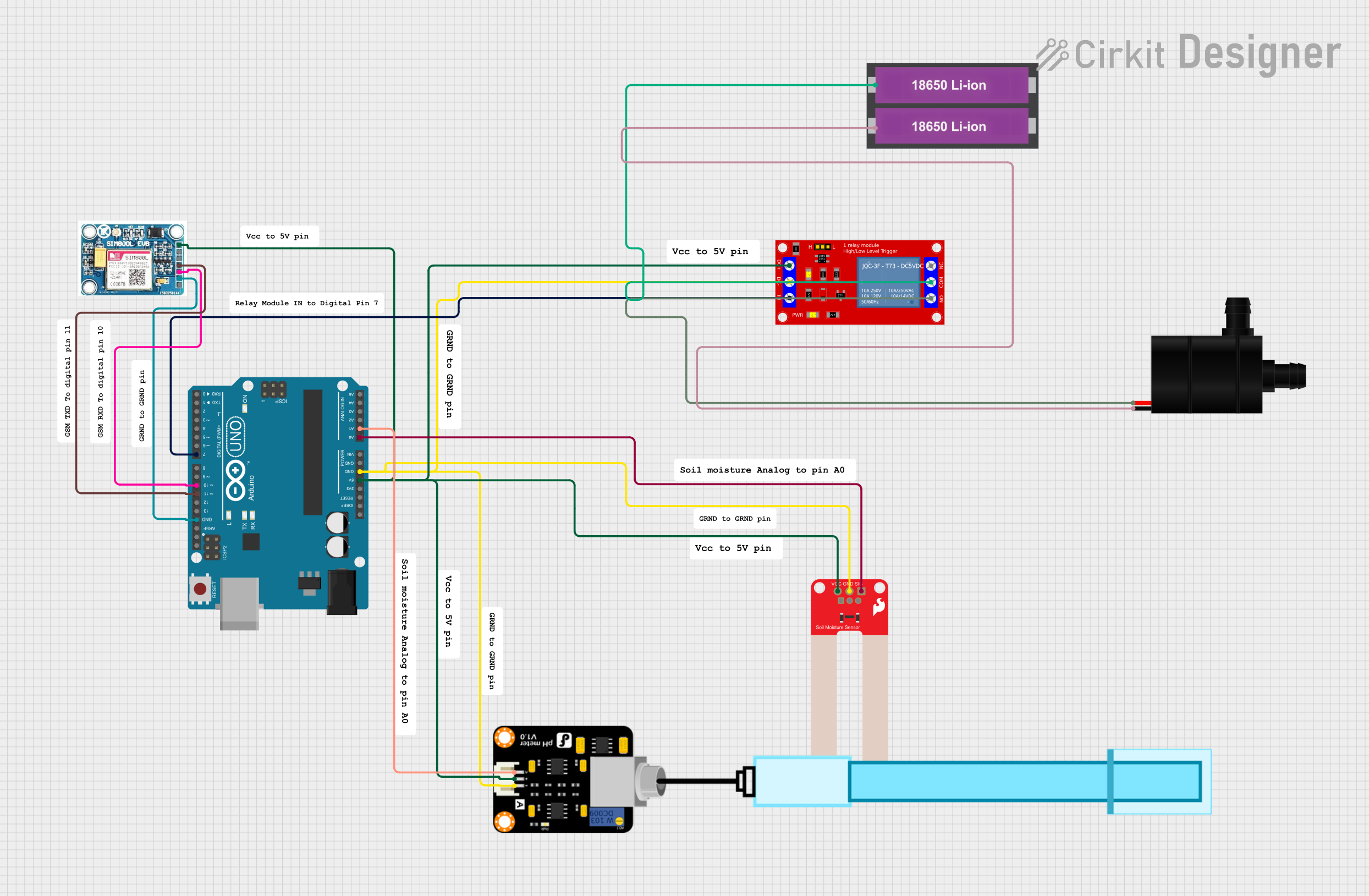
 Open Project in Cirkit Designer
Open Project in Cirkit Designer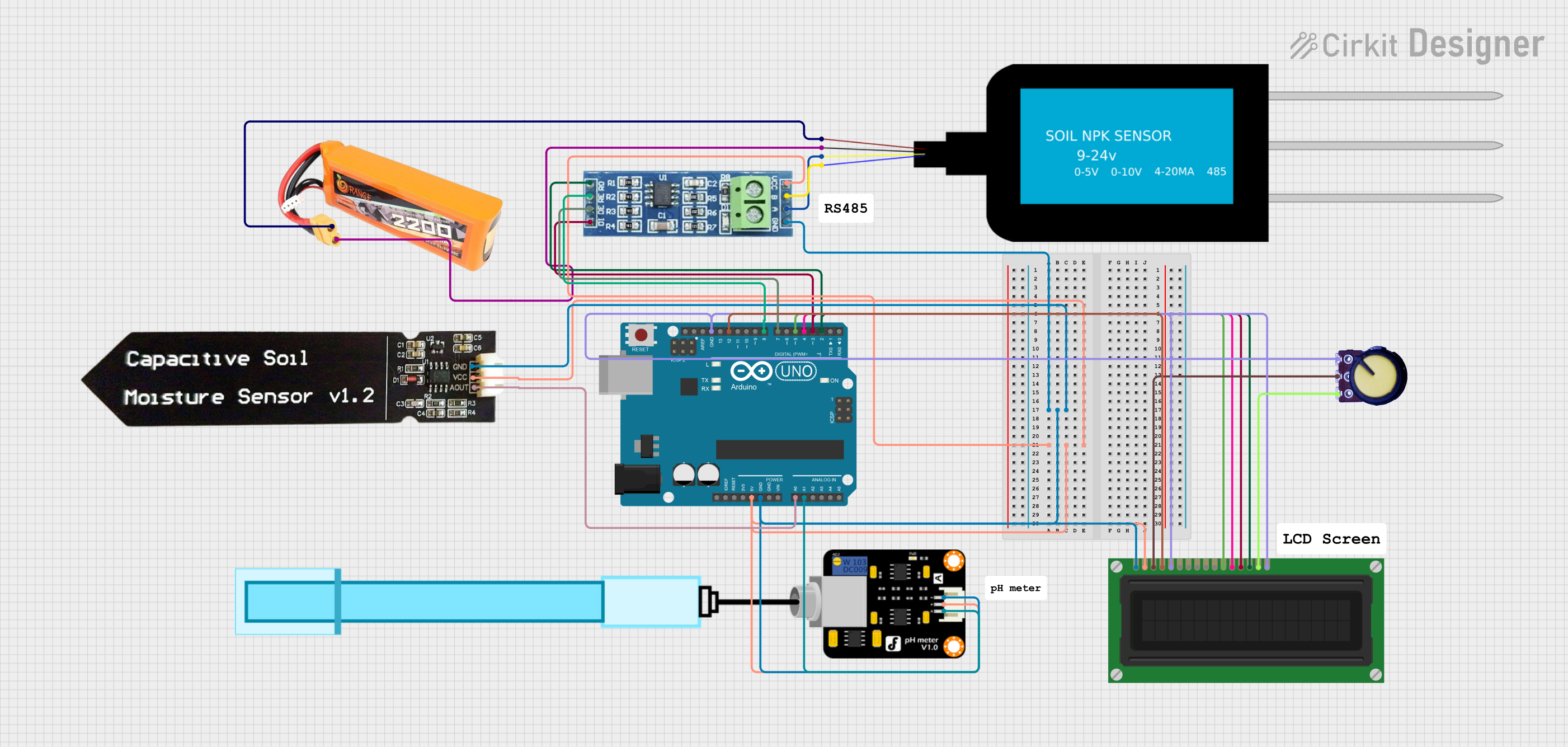
 Open Project in Cirkit Designer
Open Project in Cirkit Designer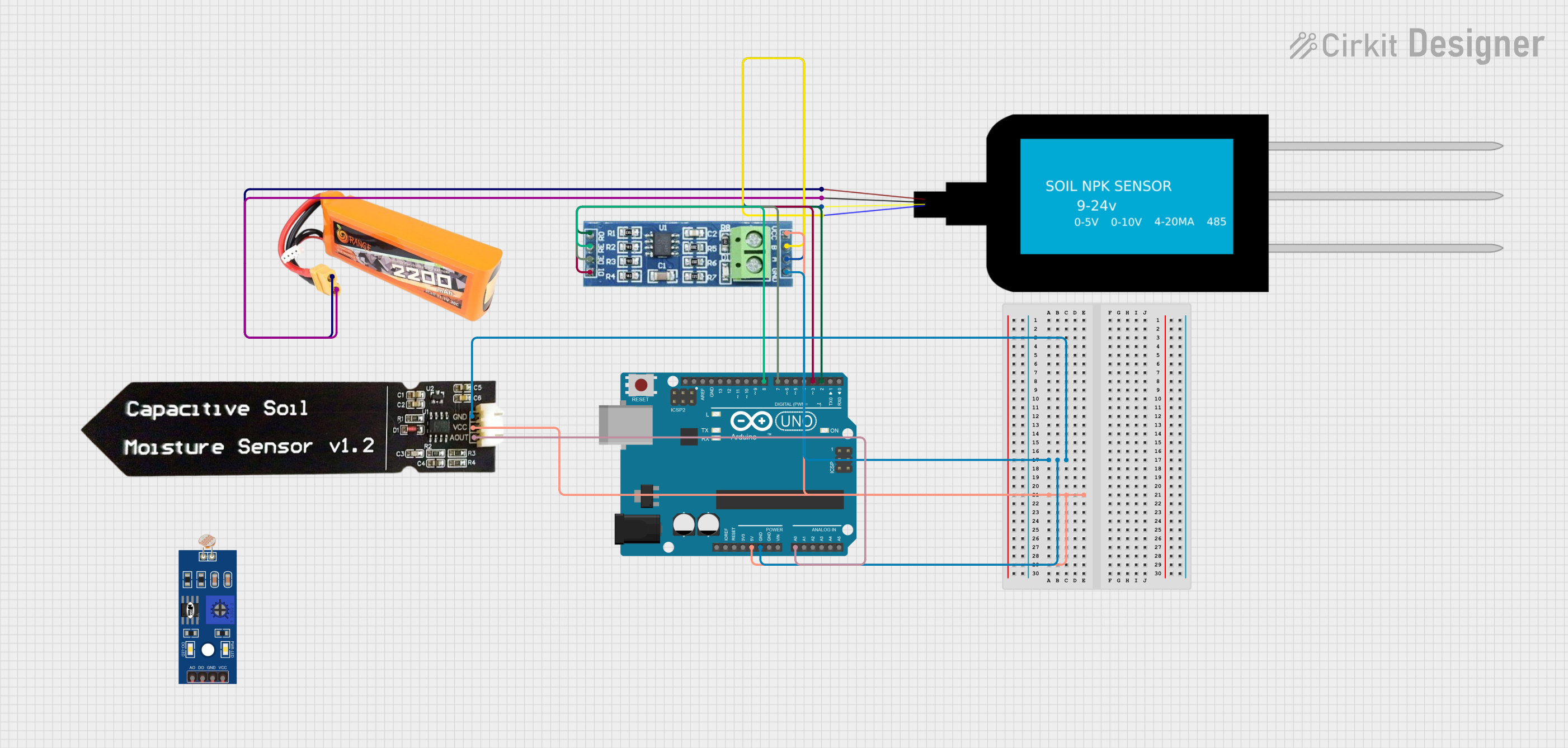
 Open Project in Cirkit Designer
Open Project in Cirkit Designer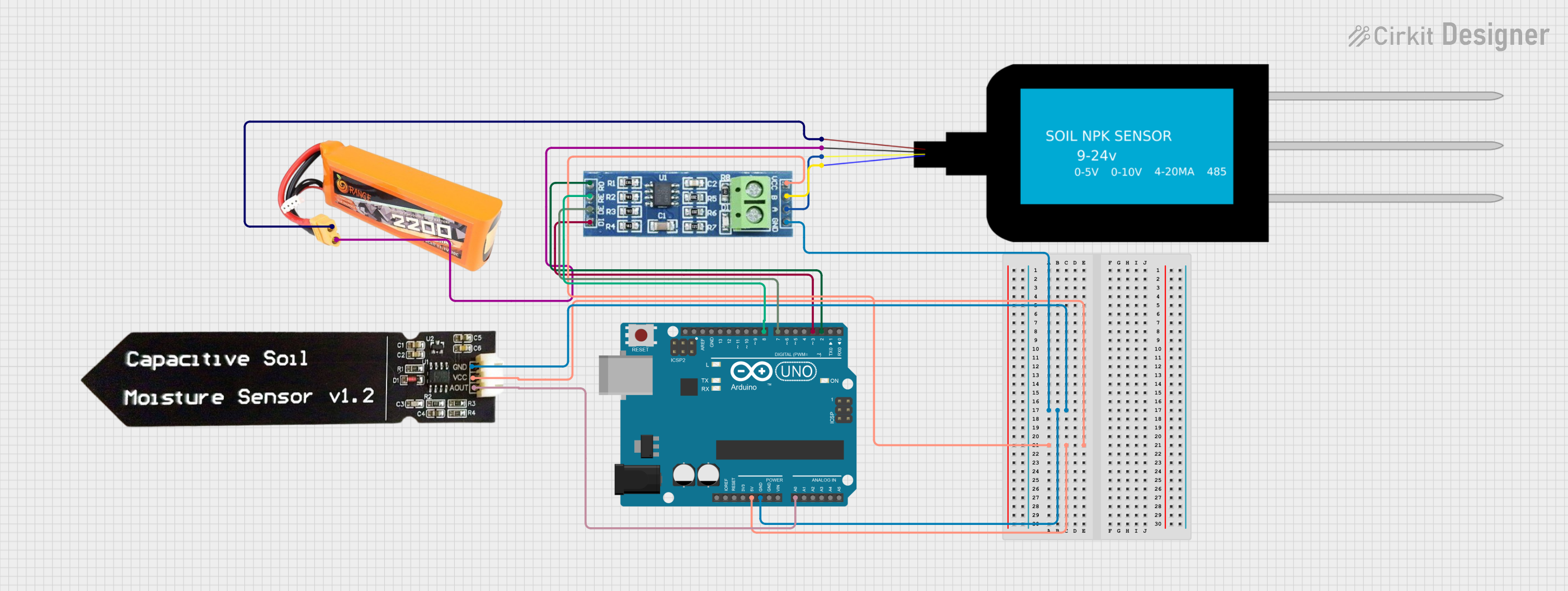
 Open Project in Cirkit Designer
Open Project in Cirkit DesignerExplore Projects Built with SOIL PH

 Open Project in Cirkit Designer
Open Project in Cirkit Designer
 Open Project in Cirkit Designer
Open Project in Cirkit Designer
 Open Project in Cirkit Designer
Open Project in Cirkit Designer
 Open Project in Cirkit Designer
Open Project in Cirkit DesignerTechnical Specifications
Key Technical Details
| Parameter | Value |
|---|---|
| Operating Voltage | 3.3V - 5V |
| Operating Current | < 10mA |
| pH Range | 0 - 14 pH |
| Accuracy | ±0.1 pH |
| Response Time | < 1 minute |
| Temperature Range | 0°C - 60°C |
| Output Type | Analog |
Pin Configuration and Descriptions
| Pin Number | Pin Name | Description |
|---|---|---|
| 1 | VCC | Power supply (3.3V - 5V) |
| 2 | GND | Ground |
| 3 | AO | Analog output (pH value as voltage) |
Usage Instructions
How to Use the Component in a Circuit
Connect the Sensor:
- Connect the VCC pin to the 3.3V or 5V power supply of your microcontroller.
- Connect the GND pin to the ground of your microcontroller.
- Connect the AO pin to an analog input pin of your microcontroller (e.g., A0 on an Arduino UNO).
Calibrate the Sensor:
- Immerse the sensor in a standard buffer solution (e.g., pH 7.0).
- Adjust the calibration potentiometer on the sensor module until the output voltage corresponds to the pH value of the buffer solution.
Read the pH Value:
- Use the analog input of your microcontroller to read the voltage output from the sensor.
- Convert the voltage to a pH value using the appropriate formula or calibration curve.
Important Considerations and Best Practices
- Calibration: Regularly calibrate the sensor using standard buffer solutions to ensure accurate readings.
- Cleaning: Clean the sensor probe with distilled water after each use to prevent contamination.
- Storage: Store the sensor in a moist environment to maintain the integrity of the probe.
- Temperature Compensation: Be aware that temperature can affect pH readings. Use a temperature compensation method if precise measurements are required.
Example Code for Arduino UNO
// Soil pH Sensor Example Code for Arduino UNO
const int sensorPin = A0; // Analog input pin for the pH sensor
float voltage;
float pHValue;
void setup() {
Serial.begin(9600); // Initialize serial communication
}
void loop() {
int sensorValue = analogRead(sensorPin); // Read the analog value from the sensor
voltage = sensorValue * (5.0 / 1023.0); // Convert the analog value to voltage
pHValue = 3.5 * voltage; // Convert the voltage to pH value (example calibration)
Serial.print("Voltage: ");
Serial.print(voltage);
Serial.print(" V, pH Value: ");
Serial.println(pHValue);
delay(1000); // Wait for 1 second before the next reading
}
Troubleshooting and FAQs
Common Issues Users Might Face
Inaccurate Readings:
- Solution: Ensure the sensor is properly calibrated using standard buffer solutions. Check for any contamination on the sensor probe and clean it if necessary.
No Output or Fluctuating Readings:
- Solution: Verify all connections are secure and correct. Ensure the power supply voltage is within the specified range. Check for any loose wires or poor connections.
Sensor Not Responding:
- Solution: Ensure the sensor is properly connected to the microcontroller. Check the sensor for any physical damage. Try using a different analog input pin on the microcontroller.
FAQs
Q: How often should I calibrate the soil pH sensor? A: It is recommended to calibrate the sensor before each use or at least once a month to ensure accurate readings.
Q: Can the soil pH sensor be used in water? A: While the sensor is designed for soil, it can be used in water for pH measurements. However, ensure the sensor is properly cleaned and calibrated for accurate results.
Q: What is the lifespan of the soil pH sensor? A: The lifespan of the sensor depends on usage and maintenance. With proper care and regular calibration, the sensor can last for several years.
Q: Can I use the soil pH sensor with other microcontrollers? A: Yes, the soil pH sensor can be used with other microcontrollers that have analog input capabilities, such as ESP32, Raspberry Pi, etc.
This documentation provides a comprehensive guide to using the Soil pH Sensor, ensuring accurate and reliable measurements for various applications.